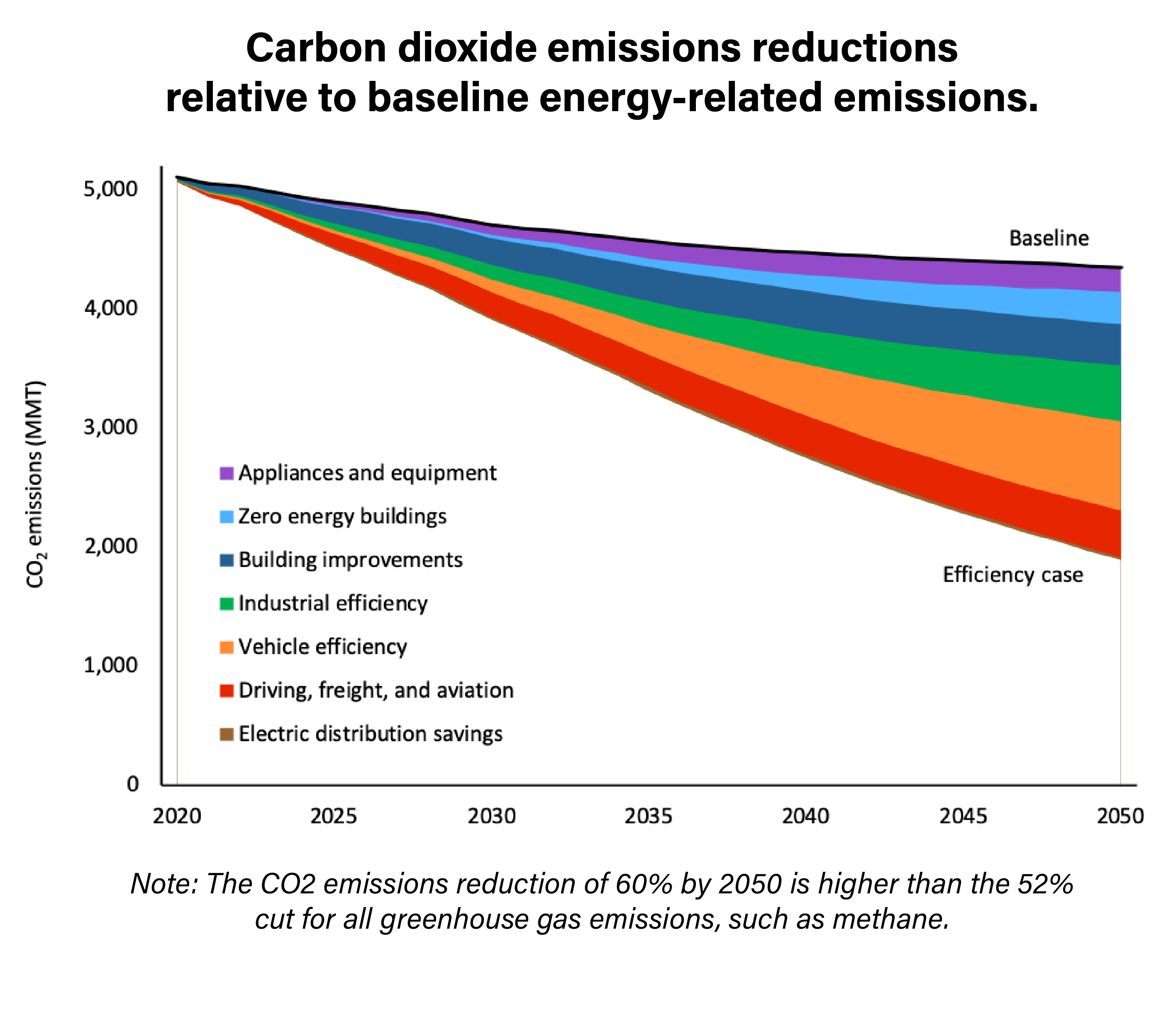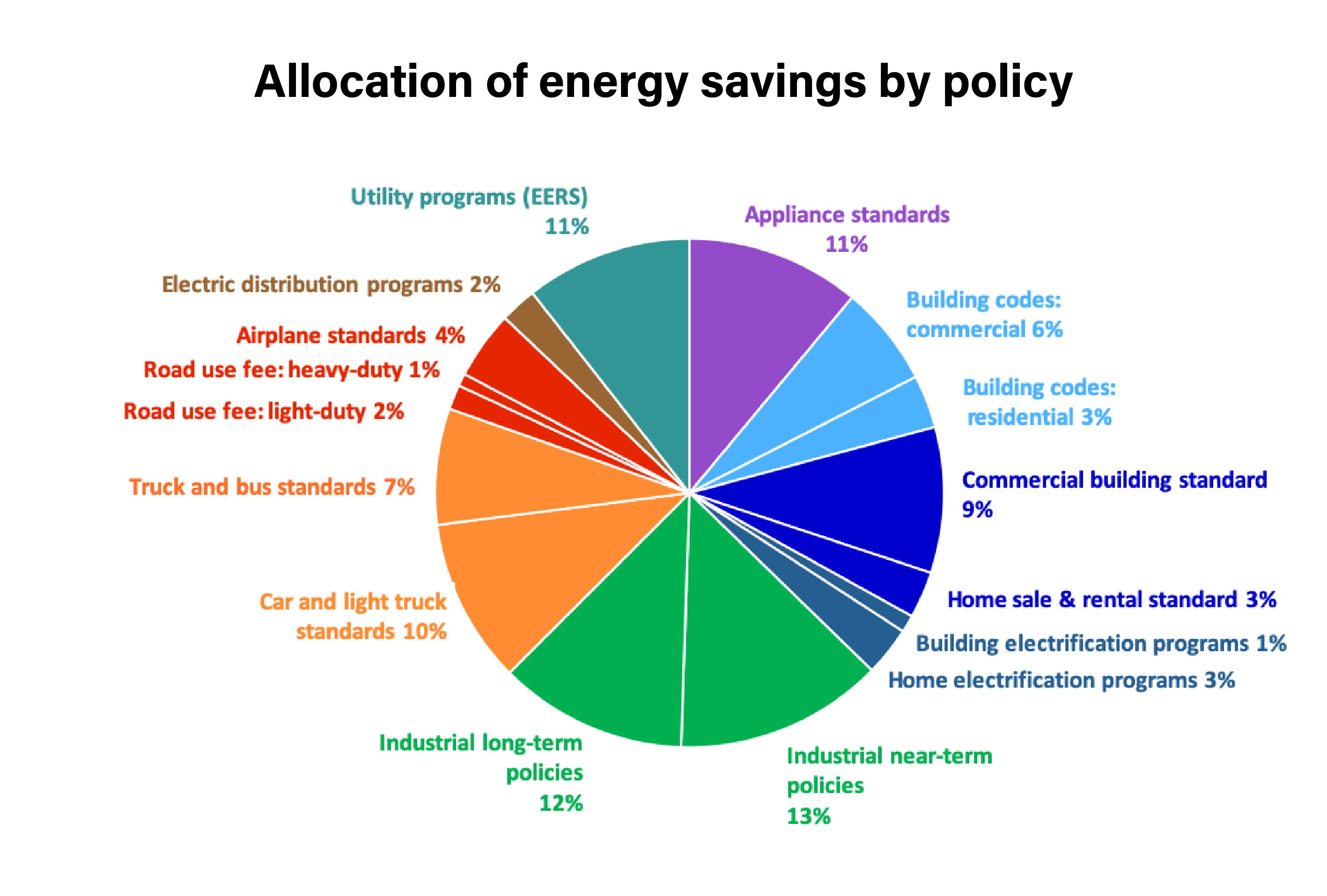Washington DC — As international leaders gather next week to discuss climate action during Climate Week NYC, new research shows that energy efficiency can slash US energy use and greenhouse gas emissions by 50% by 2050 and get the United States halfway toward its climate goals.
The report, by the nonprofit American Council for an Energy-Efficient Economy, offers a road map for dramatically reducing energy waste. It identifies ambitious but cost-effective and technically possible measures that would avert emissions of nearly 2,500 million metric tons of heat-trapping carbon dioxide — equivalent to all emissions from cars, trucks, homes, and commercial buildings in 2050.
“Energy efficiency is an urgently needed climate solution,” says ACEEE executive director Steven Nadel, a report co-author. “It can deliver swift, robust emissions cuts. We cannot wait to take action. We already see the effects of intensifying climate change and the resulting increase in extreme weather events — from respiratory and other health problems to flooding, drought, heat waves, and wildfires.”
To avoid a climate change catastrophe, long-term strategies have called for reducing total US greenhouse gas emissions by 80–100% by 2050. Prior studies, including by the International Energy Agency (IEA) and the Natural Resources Defense Council (NRDC) found that efficiency measures can produce nearly half of these reductions.
The ACEEE report, Halfway There: Energy Efficiency Can Cut Energy Use and Greenhouse Gas Emissions in Half by 2050, builds on this work by identifying 11 opportunities and related policies to achieve the necessary savings. Transportation, which will see a transition to electric vehicles, would deliver nearly half (46%) of the emissions reductions while buildings would deliver a third and industry a fifth. For energy savings, buildings would deliver 40% of the total, followed by transportation (32%) and industry (27%).
The major opportunities include:
- Transportation. A significant shift to electric cars and trucks and continued fuel economy gains under new standards could approximately halve vehicle carbon emissions. Also reducing emissions: less driving in cars and light trucks, improved freight system efficiency, and more-efficient airplanes.
- Buildings. New homes and commercial buildings could cut their emissions by 70% with efficient design and use of cleaner electricity. Existing homes and buildings slash emissions with energy-efficient upgrades, smart control technologies, and electrification of heating and cooling. Adding to total emissions cuts are updated efficiency standards for appliances and equipment and growth in the ENERGY STAR® program.
- Industry. The industrial sector could deliver hefty emissions cuts with strategic energy management, smart manufacturing, industrial process improvements (including electrification strategies), changes in feedstocks and new process technologies and materials.
“Energy efficiency is indispensable to climate change mitigation,“ says Kathleen Gaffney, co-author of the IEA’s Energy Efficiency 2018 report. “It’s already made an immense difference. Without efficiency measures implemented since 2000, global emissions in 2017 would have been 12% higher.”
Vignesh Gowrishankar, co-author of a related 2017 NRDC report, says energy efficiency is among the least expensive and most effective ways to reduce much of our emissions. “It also improves the cost and effectiveness of other critical solutions such as renewables, electric vehicles, and electric heat pumps,” he adds.
“The good news is that we can start right now by investing more in energy-efficient appliances, buildings, vehicles, and industrial plants,” says Lowell Ungar, ACEEE senior policy advisor and report co-author. “But to achieve maximum emissions reductions, we need political and financial investments that go far beyond business as usual. If we do so, the 2050 payoff will be impressive.”
The report says government policies and programs alone would deliver about $700 billion a year in energy savings by 2050. Plus, the authors note, such investment will create more jobs, boost grid resilience, reduce air pollution, and improve people’s health.
The US government, however, is moving to weaken efficiency standards for light bulbs, appliances and equipment, cars, and trucks. At the same time, more US cities and states are boosting their efficiency and clean energy efforts, though they still have a long way to go.
The report calls for scaling up energy efficiency measures, including:
- Rapid upgrades to vehicle standards, building energy codes, equipment efficiency standards, ENERGY STAR specifications, and state energy-savings targets.
- Substantial improvements to existing factories, homes, commercial buildings, and the electric grid and better management of energy use in all of them, spurred by government investment and requirements.
- More travel options and better management of freight and aviation energy use, including through user fees.
- A switch to electric vehicles, equipment, and industrial processes (along with a more efficient and cleaner power sector).
- Greater investment in research and development for new efficiency options in every sector, especially improved industrial processes.
For more detail, check out ACEEE’s fact sheet and full report, or listen to our release webinar, available to watch here (download slides).
The American Council for an Energy-Efficient Economy acts as a catalyst to advance energy efficiency policies, programs, technologies, investments, and behaviors.


